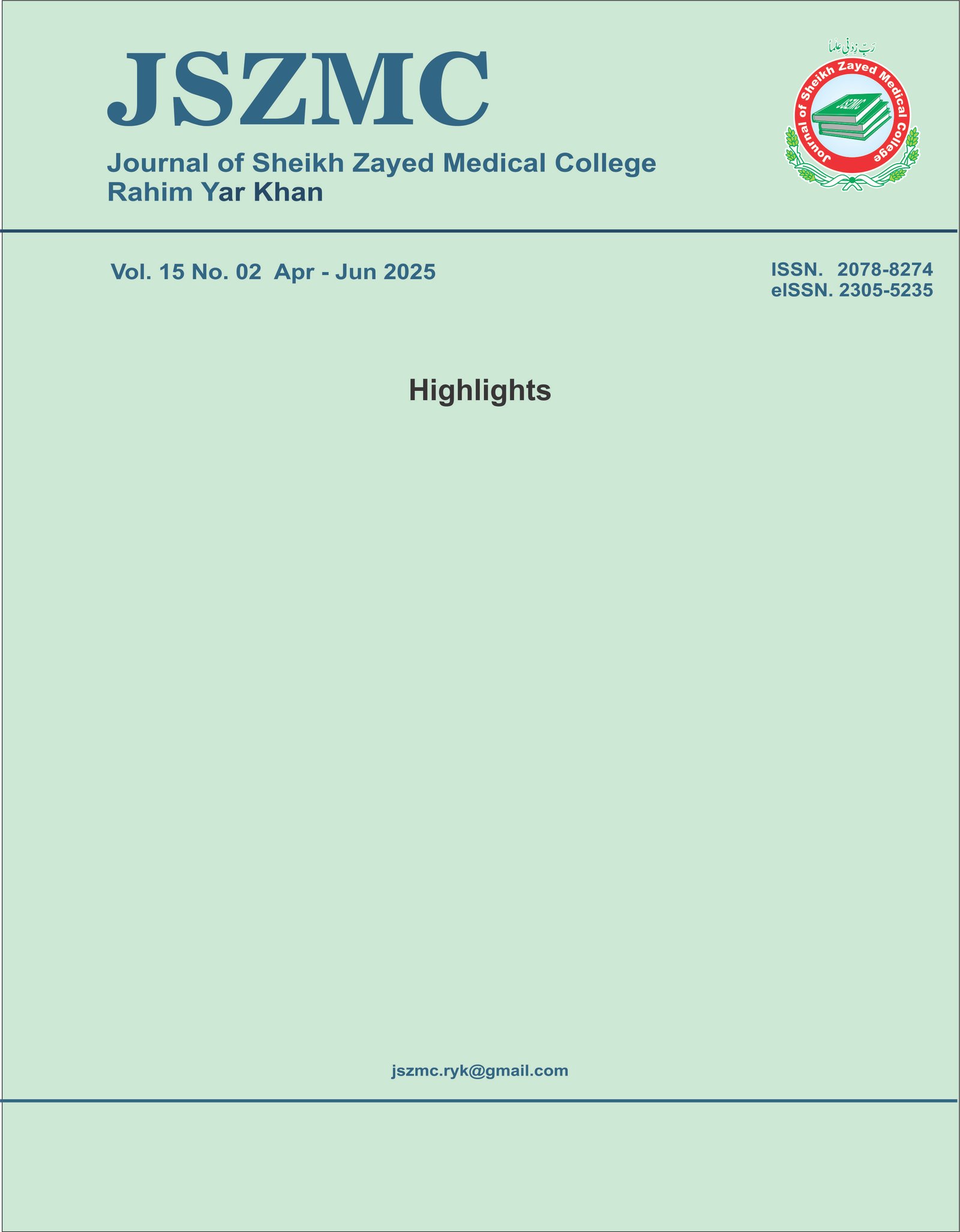Assessment of Personal Protective Equipment usage and Compliance to prevent Infectious Disease spread in a Tertiary Care Hospital setting
DOI:
https://doi.org/10.47883/jszmc.v15i02.298Keywords:
Personal protective equipment, healthcare workers, occupational safety, primary healthcare, secondary healthcare, infection controlAbstract
Background: Healthcare workers (HCWs) face occupational infection risks, especially in high-risk environments, necessitating strict adherence to personal protective equipment (PPE) protocols to prevent transmission. Objective: To assess the usage and compliance with Personal Protective Equipment among healthcare workers in a tertiary care hospital. Methodology: This cross-sectional study enrolled 310 HCWs (doctors, nurses, allied health, and janitorial staff) via stratified sampling. Inclusion criteria: HCWs ≥18 years old, employed for≥6 months in clinical/support roles. Data collection included KAP surveys, direct observation of PPE practices, and compliance metrics. Independent variables were PPE type, frequency, and protocol adherence; compliance scores served as dependent variables. Statistical analysis used chi-square tests and logistic regression. SPSS version 26.0 was used for data analysis. Results: PPE compliance rates for masks were 255 (82.3%), gloves 242 (78.1%) and gowns 203 (65.5%). Doctors demonstrated the highest compliance at 80 (80%). Availability of PPE was also strongly associated with compliance (p<0.001). PPE availability significantly boosted compliance (adjusted OR 4.2; 95% CI 2.8–6.3), alongside training (OR 3.1; 95% CI 1.9–5.1) and high-risk departments (OR 2.5; 95% CI 1.6–3.9). High workload inversely related (OR 0.6; 95% CI 0.4–0.9). Barriers were discomfort/poor fit (45.2%), shortages (38.1%), inadequate training (28.1%), and low-risk perception (21.9%). Conclusion: PPE compliance among HCWs is suboptimal, influenced by resource availability, training, workload, and departmental risk. Prioritizing consistent PPE supply, training, and workload management is critical to reducing preventable infections and protecting HCWs.


